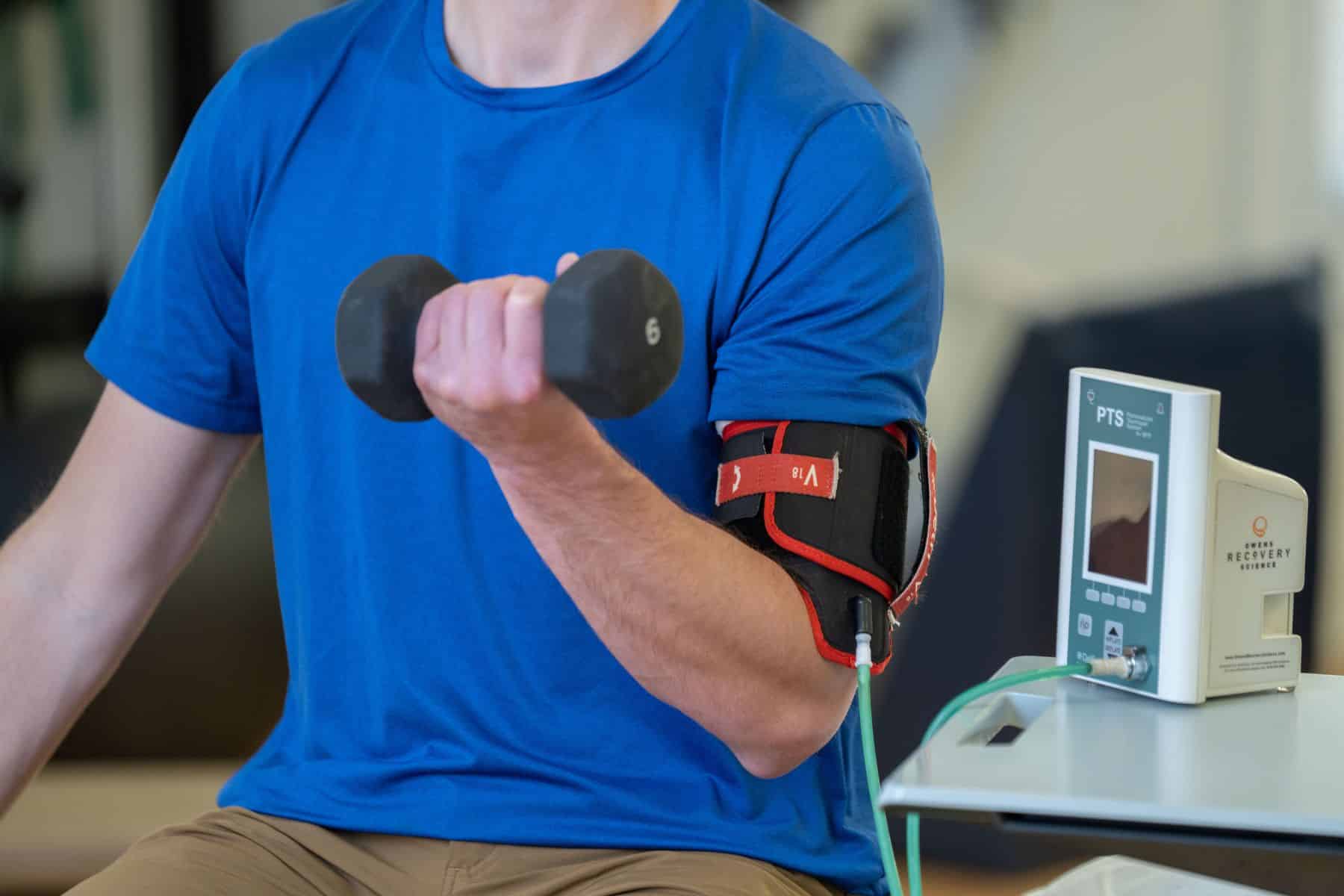What is Blood Flow Restriction Training?
Blood flow restriction training is the act of safely and briefly restricting arterial and venous blood flow with the use of cuffs placed around an extremity during training.
The goal of BFR is to increase the metabolic stress on the muscles without doing intense work to still get the beneficial physiological changes for strength and hypertrophy with lower workloads. BFR can be used with isometrics, neuromuscular electrical stimulation (NMES), body weight exercise, resistance training, aerobic conditioning, or even at rest in acute situations. It can be used as an adjunct tool to aid recovery in shorter amounts of time with less stress on the body than typical training.


